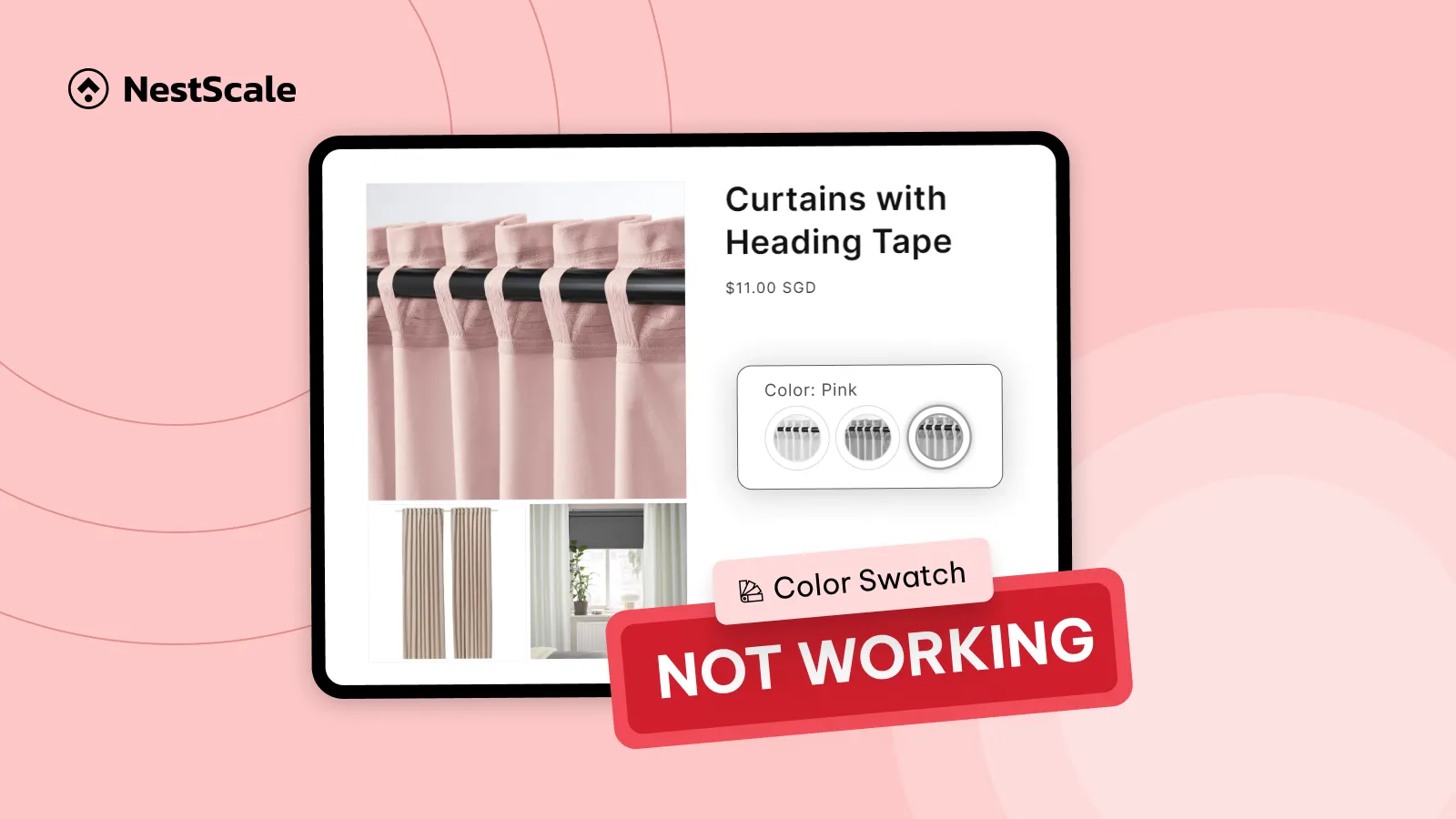Facebook ads play a crucial role in fueling the growth of business sales. Despite their effectiveness, there’s a challenge known as Facebook ad creative fatigue that can hinder the benefits of your ads. Explore this blog to gain comprehensive knowledge, from the basics to advanced insights, on how to tackle Facebook ad fatigue and optimize your advertising strategy!
What is creative fatigue on Facebook Ads?
Facebook ad creative fatigue (or creative limits in Facebook ads) occurs when audiences see your creative ads on their feeds too many times. According to experts’ experience, if an audience must see one creative ad more than 2 to 2.5 times, there is a high chance that they’ll get ad fatigue.
As a result, this phenomenon leads to customers reporting/blocking your ad, decreasing your brand awareness and impression. Worse, you will be faced with a higher cost per result and lower conversions. In general, your campaign performance will be negatively impacted if your ad is diagnosed as creative fatigue.
What causes creative fatigue on Facebook ads?
The presence of Facebook ad creative fatigue can be attributed to three primary sections: creative burnout, ad irrelevance, and under-standardized ad quality. Let’s explore how each of these features contributes to the phenomenon of ad creative fatigue on Facebook.
- Creative burnout: Creative burnout happens when uninspiring or outdated content is duplicated frequently without any effort to improve or fix it.
- Ad irrelevance: In case your ads were set wrongly toward who can see it, it will be called ad irrelevance. This phenomenon leads to a lower possibility of clicking or reacting from customers.
- Under-standardized ad quality: Ads of low quality or lacking in effective design, which fails to grab attention or offer value, can contribute significantly to ad fatigue. When advertisements don’t meet consumer expectations, individuals are more inclined to ignore or dismiss them.
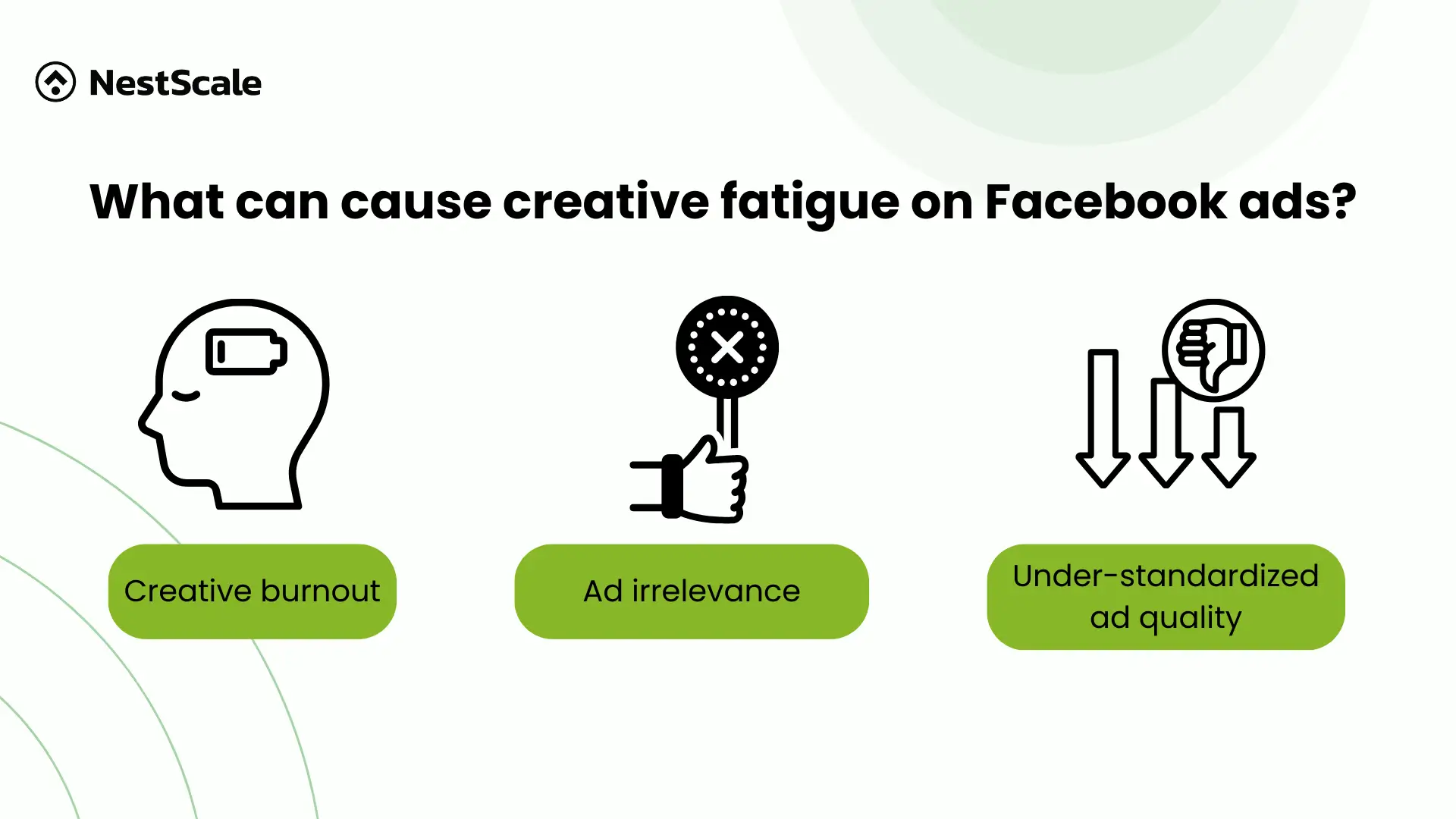
How to identify Facebook Ads creative fatigue?
To assess whether your ads are experiencing creative fatigue while running campaigns, consider following our recommendations for fresh ideas and strategies:
Check notifications from Meta Ads Manager
To identify ad fatigue before activating your campaign, you can look for notifications in your Meta Ads Manager. Once your campaign is set, the platform will use the number of ads you have and the duration of your campaign to predict potential ad fatigue issues within 7 first days of your campaign. This allows you to make adjustments to your campaign setup before publishing, helping you avoid problems with ad fatigue. Keep an eye on these notifications to ensure your ads stay fresh and effective.
Check the delivery column
After the campaign is activated, if Meta Ads Manager detects the ad duplication, it will note in the Delivery column as Creative Limited or Creative Fatigue.
- If the cost per result for your current ad exceeds that of previous ads but is less than double, Facebook will indicate a Creative Limited status.
- If the cost per result is equal to or exceeds twice the amount of your previous ads, you will observe a Creative Fatigue status.

Please keep in mind that this feature only supports ad sets with one creative. However, multiple creative catalog ads using Advantage+ will still be able to see this feature. Therefore, if your ad is one among these types of ads listed above, you can the last method below.
Check your creative post
You can also evaluate your ad post to see whether it is fatigued or not by focusing on these metrics:
- Negative feedback: A decline in comments and reviews on social media suggests potential ad fatigue.
- Ad blindness: High chances of ad blocking or skipping indicate ad fatigue and should not be overlooked.
- Low KPIs: Key performance indicators (KPIs) such as CTR rate, conversion rate, ROAS, impression, and CPA rate are crucial for assessing ad creative fatigue. A decrease in these metrics may signal that your ad is experiencing fatigue.
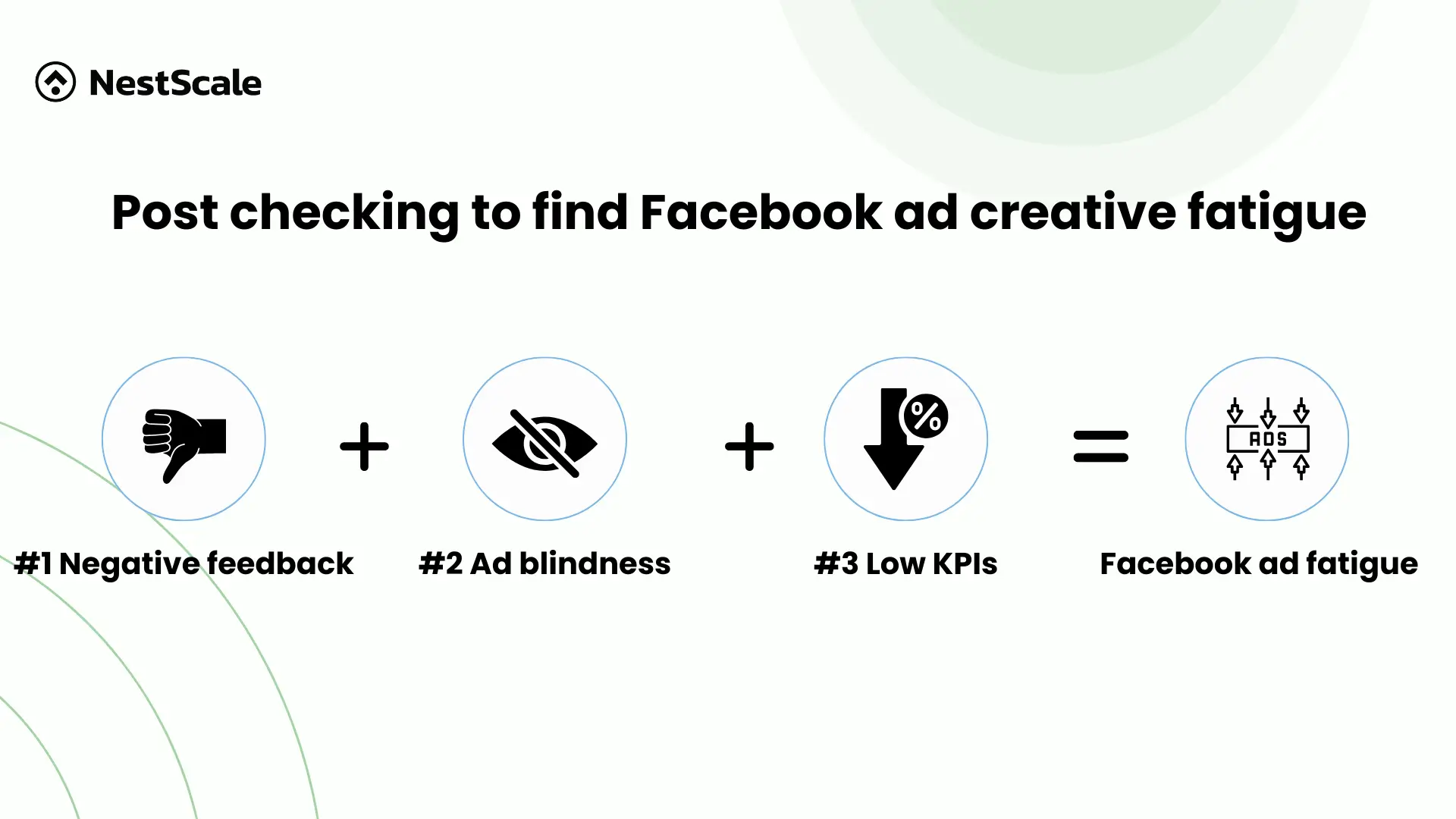
What could be the treatment for Facebook ad fatigue?
We are aware that Facebook ad fatigue comes with various drawbacks. What measures can be taken to prevent or, at the very least, minimize its impact?
Refresh your ad
To avoid Facebook ad fatigue effectively, it is vital to consistently update your ad creatives. We strongly recommend avoiding direct duplication of ads; instead, introduce variations for each post. If there’s a need to reuse a creative post, make sure to incorporate at least one new element to ensure that identical posts are not published.
Here are some simple ways for you to try to refresh your ad
- Revamp visual elements: Infuse new images or videos into your ads while maintaining the same format. Showcase different product angles, functionalities, or use scenarios.
- Refresh headlines and descriptions: Experiment with diverse messaging, accentuating various benefits or incorporating novel language.
- Explore untapped audiences: Extend your outreach to akin yet slightly distinct demographics or interests.
- Experiment with varied ad formats: Test the effectiveness of images, videos, carousels, or collections to ascertain the most resonant format.
- Employ Dynamic Creative Optimization: Harness Facebook’s automatic testing feature to evaluate different ad permutations for optimal results.
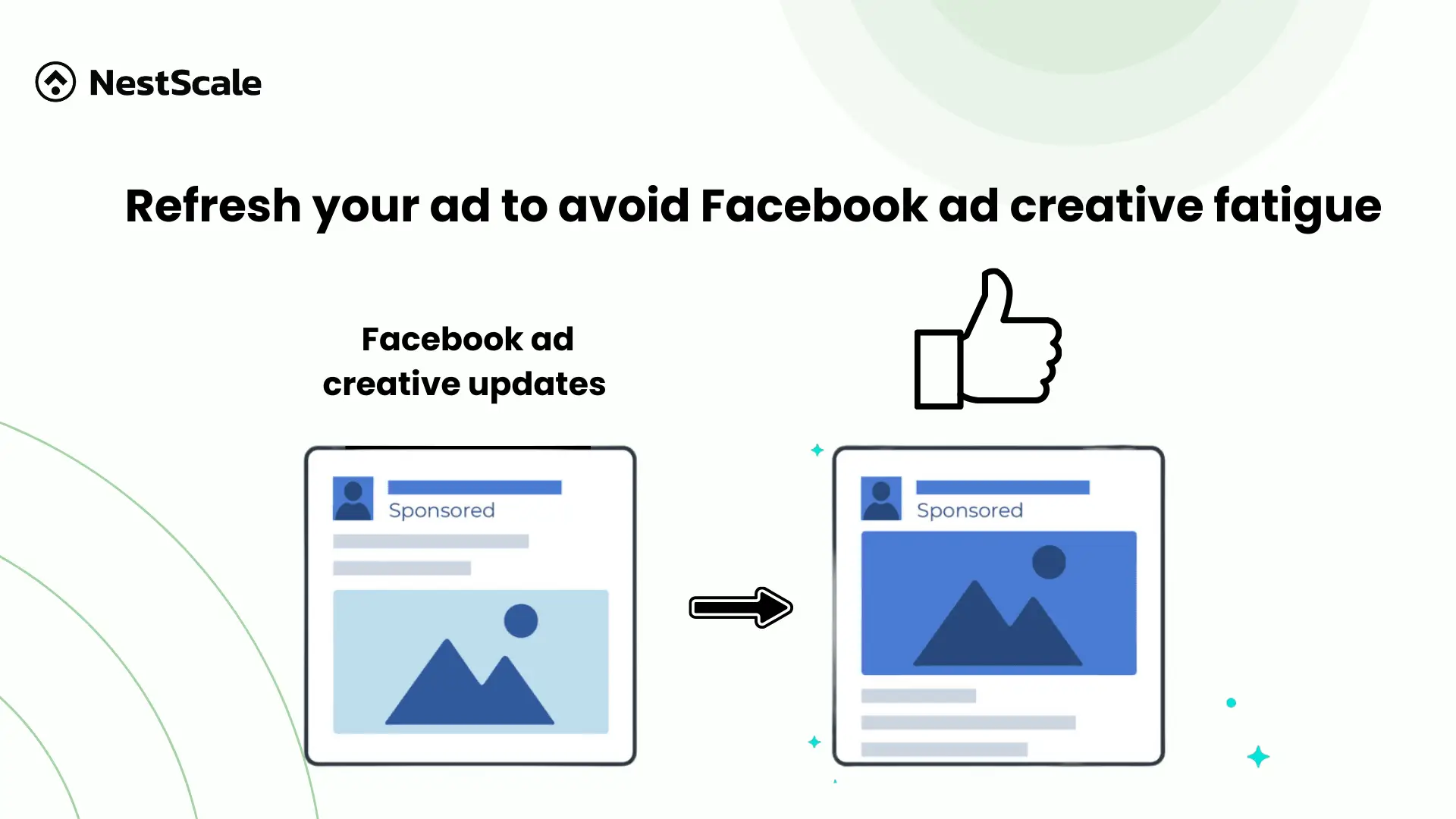
Expand your audience
Opting for a smaller audience size can be advantageous, especially if they are loyal, leading to a higher conversion rate. Nonetheless, it may also contribute to ad fatigue as your ads could be viewed repetitively by the same audience. Here are adjustments to the audience that you might want to contemplate encompass:
- Age
- Gender
- Interests
- Behaviors
- Geographic location
Run ads on scheduled times
Facebook provides a built-in ad set scheduling feature that enables you to display ads only on specific days and at designated times. This approach helps minimize less effective impressions and reduces the likelihood of Facebook ad fatigue. Here are steps to follow when you want to turn this function on:
Start by adjusting your Budget to Lifetime Budget. Also, for your scheduling, remember to set up an end date for your campaign by ticking on Set an end date checkbox.

Scroll down to the ad scheduling option, and opt for Run ads on a schedule. This will allow you to set up to run your ads at only certain times per day. Remember to switch to lifetime budget to edit this section.

Frequency cap
nstead of purchasing your ads via Auction, consider switching your buying type to Reach and Frequency for better control over how often your ads appear in the audience’s feed. To do this, go to your campaign settings and select Reach and Frequency as your buying type. This change allows you to manage the frequency of your ads more effectively.

Then, click Next. In your ad set, scroll down to the section Optimization & Delivery. Then you can adjust your frequency cap to limit the visibility of your creatives.

A frequency cap is a setting in advertising platforms that limits the number of times a specific user sees your ad within a given timeframe. It’s like a safety measure to prevent ad fatigue, which happens when people see the same ad too often and start to tune it out.
You can set a frequency cap in the Bid Strategy section by choosing to set an impression limit ranging from 1 to 90. Also, specify the number of days this limit should apply. This allows you to control how often your ads are seen within a certain timeframe.
Here are some key notes if you want to use this function:
- For the majority of marketers, the optimal Facebook ad frequency typically falls within the range of 1.01 to 2.99.
- You can use the Frequency cap with both campaigns which are reported to be fatigued or even a campaign which you will set.
- You should lower the frequency to introduce the ad to new individuals and renew its impact.
- If your campaign objective is Reach, make sure you understand how to exclude existing customers or website visitors to mitigate the fatigue possibility.
Focus on conversions
The most effective Facebook Ad campaigns are those optimized for conversions. To address ad fatigue, consider experimenting with various conversion-focused audiences.
By changing your audience, you enable Facebook to display your ads to a broader audience. Here are some examples of Conversion-focused audiences:
- Holiday shoppers: Target individuals displaying high purchase intent during holiday seasons, tapping into their seasonal buying behavior.
- Email subscribers: Directly engage with your loyal email subscribers, leveraging the established connection for potential conversions.
- Website behavior: Target users who have exhibited deep engagement with specific content on your website, such as those who have viewed multiple pages, signaling a strong interest.
- Customer lists: Target your existing customer base and their lookalikes, leveraging past purchasing behavior for higher conversion potential.
These audiences are inherently more predisposed to be interested in your product or service, thereby increasing the likelihood of conversion.
Remember to use the same post ID when altering your campaigns to maintain social proof and assess the impact on your conversions (such as likes, comments,…). Adjusting one feature at a time facilitates identifying the elements that have the most significant impact on your campaigns.

Try Meta Advantage+ creative
This functionality, previously referred to as “dynamic experiences,” automatically produces numerous iterations of your ad using a single image or video. Subsequently, it tailors the displayed variation to each user, aligning with their preferences to enhance engagement.
To use this automated feature, provide input, and Facebook will diversify your creative content, applying filters, adjusting contrast, brightness, and using templates. These enhancements aim to elevate media quality for increased audience engagement.
Meta Advantage+ goes further, allowing ad-level compositional changes such as adding labels or integrating business metadata for a more impactful ad experience.
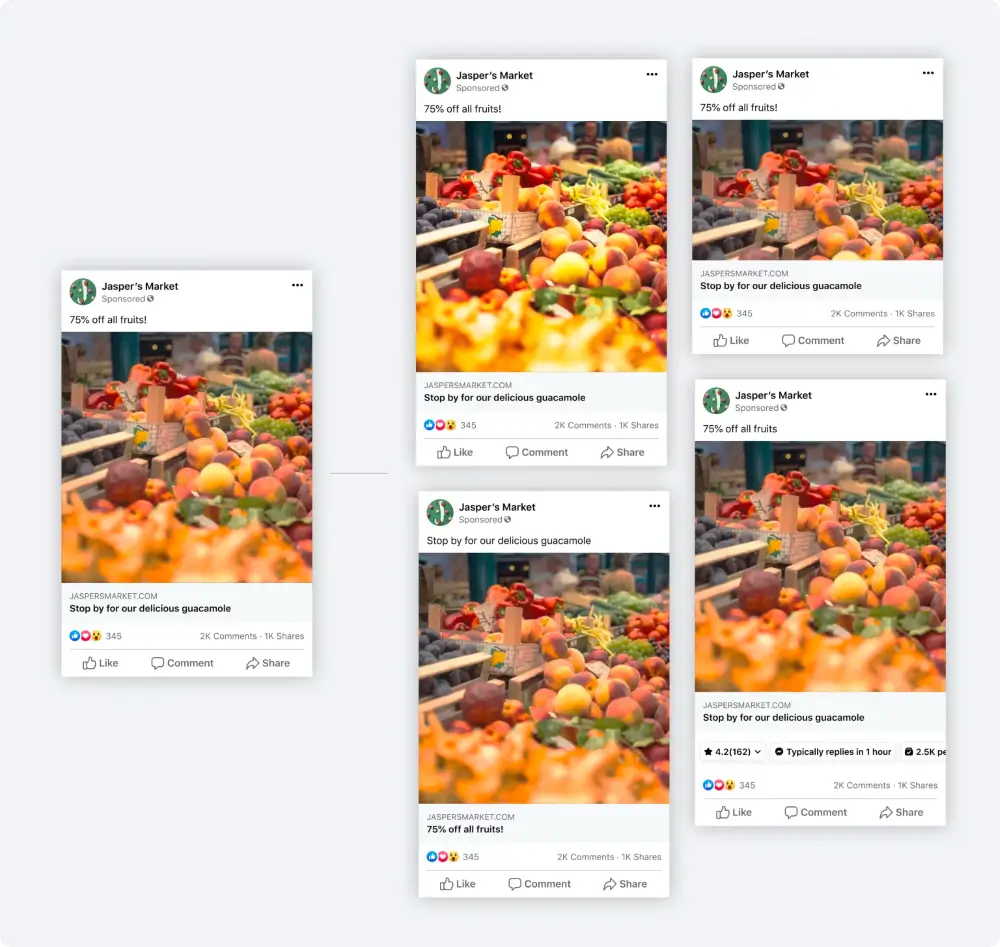
Test and optimize
We recommend consistently testing your ad creative to prevent ad fatigue and optimize its relevance with your target audience. Utilizing A/B testing allows you to assess the performance of each variation, ensuring ongoing effectiveness.
Alternatively, consider implementing the daily unique reach feature to augment conversion potential, promote a unique user experience, and mitigate redundancy. To activate this function, navigate to Optimization for ad delivery settings and select Daily unique reach.
This adjustment can help diversify your ad delivery strategy, reaching more unique users and optimizing campaign performance.

Combat Facebook ad creative fatigue with ease! Dive deep into the performance of your ad creatives, beyond the surface level of campaigns and ad sets with NestAds Creative Report. The feature empowers advertisers with detailed analytics for each creative, enabling a granular examination of what truly resonates with your audience.
By offering insights at the creative level, NestAds facilitates a nuanced approach to ad optimization, helping you to identify successful patterns, adapt your targeting, and overcome creative fatigue. Make informed decisions to keep your ads engaging and effective over time. Discover the transformative impact of Creative Report on your ad campaigns.


















































